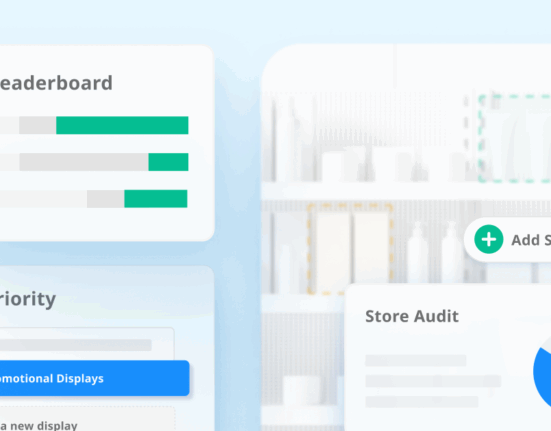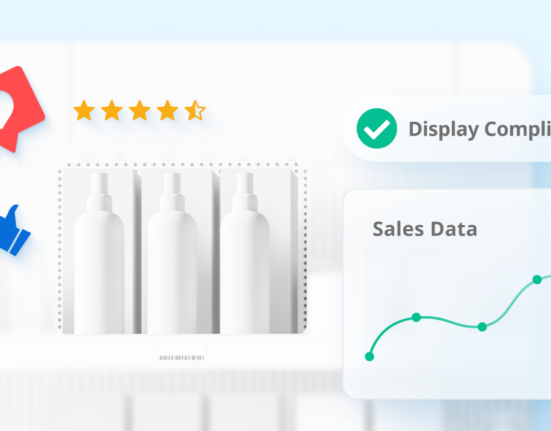A physical presence is a must-have for many brands and retailers. A strong showing inside brick-and-mortar stores can be an excellent way to drive revenue and support an eCommerce channel—or the only way to drive revenue.
Of course, a physical store introduces many challenges unique to this channel. You want to create an excellent shopping experience inside stores, but a lot of hands touch your brand before—and after—it hits shelves. You have to think about inventory levels, display execution, store associate knowledge, and much more.
The good news is that high-quality brick-and-mortar retail data can identify areas where you’re winning and losing. Plus, data can provide a clearer path forward and confirm the results of your in-store initiatives.
So then, backed with brick-and-mortar data, what more can you do? Check out these five use cases for brick-and-mortar retail data.
Use Case No. 1: Shelf Health
Shelf health is all about how your brand looks inside physical stores. Shelf health answers whether your in-store programs have been executed at the shelf and fixture level.
Quality brick-and-mortar retail data will help you better understand shelf health. Specifically, this data will address:
- On-shelf availability
- Out-of-stocks
- Almost out-of-stocks
- SKU presence
In addition to these data points, you may also want to learn more about facings, adjacencies, share of shelf, planogram compliance, and more.
For example, capture data that answers whether your products are in-stock. Get clear pictures of shelves to see adjacencies, or use in-store data to predict inventory levels and adjust supply as needed. Then you can communicate with the stores in question to fix any issues.

Use Case No. 2: Display Compliance
The second use case for brick-and-mortar data is display compliance, or whether you’ve achieved merchandising excellence. What is display compliance? It’s whether your trade promotions were activated, if signage and collateral are set up and accurate, and more.
Acquiring in-store data will help you manage a number of areas associated with display compliance:
- Merchandising displays
- Display presence
- Demo functionality
- Promotional fixtures
- Trade activations
- POS collateral
For instance, you can capture data on all Walmarts in the Northeast region to see if a freestanding display you negotiated is set up properly. You can use this data to pinpoint stores that aren’t compliant and then take corrective action.
Use Case No. 3: Store Associate Rate of Recommendation
A customer walks into a store and is greeted by a store associate. The customer asks which TV brand is the best one to buy. The associate points them in a specific direction. Which brand did the associate recommend?
This is store associate rate of recommendation, or the frequency that employees guide shoppers to specific brands or products. Ideally, they’re recommending your brand, but we know that this isn’t always the case. And missing out on recommendations can hurt sales and brand perception.
Therefore, this use case is all about increasing in-store sales by lifting the impact of sales associate training programs and other education tactics. You invest in time and money with the retailer to train associates on your products, and you want to make sure those investments pay off with recommendations on the floor.
Capture retail data in this area to learn:
- The first brand recommended to shoppers
- The second brand recommended
- What brands and benefits are mentioned
- How knowledgeable associates are about your brand and products
- How else associates interact with consumers
In practice, this will let you measure the impact of associate training programs. It will tell you which brands are recommended most often, or whether associates are knowledgeable on a certain category, so you can focus improvement efforts where needed.

Use Case No. 4: Retail Operations
The fourth use case shifts focus to retailers. Retail operations cover all front-of-store aspects of a physical location. Getting high-quality retail data here is a big win because it can help retailers hone in on what’s working and what isn’t, and then prioritize efforts in the most important areas.
Therefore, brick-and-mortar data on retail operations includes:
- Welcome experience
- Time-to-assistance
- Store cleanliness
- Checkout experience
- Digital receipt offers
- Loyalty program sign-up offers
For example, retailers have captured this data to measure how often associates get customers to sign up for loyalty programs. Or, they send smartphone-enabled shoppers into all the stores in a region to get an idea of store cleanliness.
Use Case No. 5: Shopper Sentiment
The previous use cases have covered brands and retailers. The last use case for brick-and-mortar retail data looks at consumers.
Shopper sentiment data is ideal for anyone who wants a qualitative assessment of consumer behavior inside physical stores. That often means consumer insights and shopper marketing professionals, but this use case can be valuable for any brand or retailer who wants a better picture of their in-store customers.
Often, shopper sentiment data includes:
- Feedback on the appeal of products, displays, or shelves
- The first moment of truth
- Product preferences
- Buyer intent
- General shopper experience
For instance, brands will send mystery shoppers into stores to get survey data on how those shoppers view the brand’s products. Did they like what they saw? Were they motivated to buy? Retailers can do the same, but ask shoppers for feedback on how the checkout experience was, or if store associates came across as friendly or pushy.
Lift In-Store Sales with Brick-and-Mortar Retail Data
At the end of the day, these five use cases are all about one thing: improving your in-store sales. Whether you do it by creating and executing excellent physical displays, training strong store associates, or something else, you are using data to guide your path forward toward better sales.
Thankfully, there are a variety of ways you can capture in-store data to fit your needs. Once you decide, think about how to leverage that data to fit one of these uses case—so you can continue to grow your successful business.









